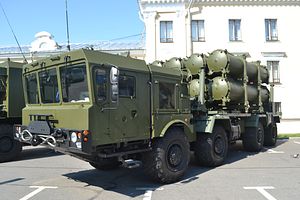Russia will deploy advanced coastal missile systems on the Kuril islands and explore the possibility of setting up a permanent naval base for its Pacific Fleet on the island chain, Russian Defense Minister Sergei Shoigu announced last week during a ministry meeting, according to TASS.
“The planned rearmament of contingents and military bases on Kuril islands is under way. Already this year they will get Bal and Bastion coastal missile systems as well as new-generation Eleron-3 unmanned aerial vehicles,” Shoigu said. (In 2015, the Russian military had already stationed the Tor low-to-medium altitude, short-range surface-to-air missile system on the islands.)
In addition to the deployment of missile batteries, Russia’s defense minister said that a naval expedition will be dispatched in April to “study the possibility of basing forces of the Pacific Fleet on the archipelago.” Shoigu’s statement is in line with repeated announcements of the Russian government throughout 2015 that it intends to build up the civilian and defense infrastructure of the islands (See: “How Russia Tries to Intimidate Japan”).
Russia’s military buildup on the islands last year has also led to the postponement of a long-planned visit to Japan by Russian President Vladimir Putin, despite brief hopes of a resolution of the long-running territorial dispute involving the Kuril islands during the 2015 United Nations General Assembly in September in New York (See: “Putin’s Visit to Japan Indefinitely Postponed”).
As I reported previously:
The disputed Northern territories–known in Japanese as the Shikotan, Kunashiri, Etorofu and the Habomai islets–and located in the Sea of Okhotsk in the Northwest Pacific, were seized by the Soviet Union in 1945. By 1949 the Russians had expelled all 17,000 Japanese residents of the islands.
Under the 1951 San Francisco Peace Treaty, Tokyo renounced “all right, title and claim to the Kuril Islands,” however, Moscow never signed the peace treaty and Tokyo refused to concede that the four disputed islands were in fact part of the Kuril chain.
Japan has repeatedly rejected Moscow’s offer to settle the dispute with the return of the two smallest territories of the Habomai chain and Shikotan. Tokyo also reiterated its claims to all four disputed islands in last year’s defense white paper. “The conflict is further fueled by potential offshore reserves of oil and gas, as well as rich fishing grounds,” I explained in 2015.
The Bal-E modern coastal missile system fires the subsonic H-35 anti-ship missile with–depending on the variant–an operational range of about 130 to 300 kilometers (80-186 miles). K-300 Bastion-P standard batteries fire the over-the-horizon supersonic P-800 Oniks anti-ship missile with an approximate maximum range of 600 kilometers (372 miles).
On Monday, Japan’s Chief Cabinet Secretary, Yoshihide Suga, criticized Russia for re-militarizing the Kuril islands. “We express concern over the statements of the [Russian] defense minister. Possible strengthening of Russian military infrastructure on the four northern islands [South Kuril Islands] contradicts the positions of our country,” Suga said.
































